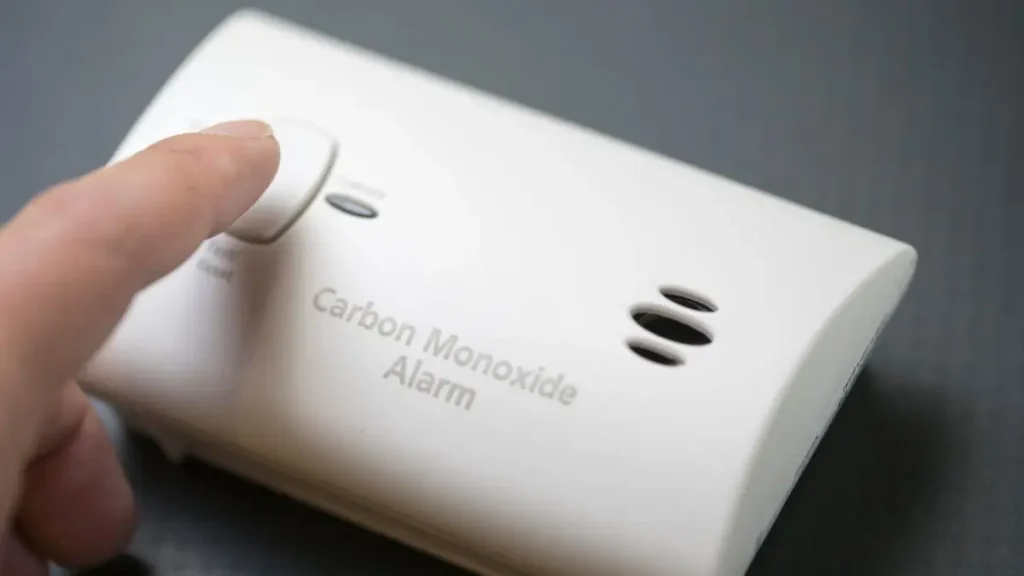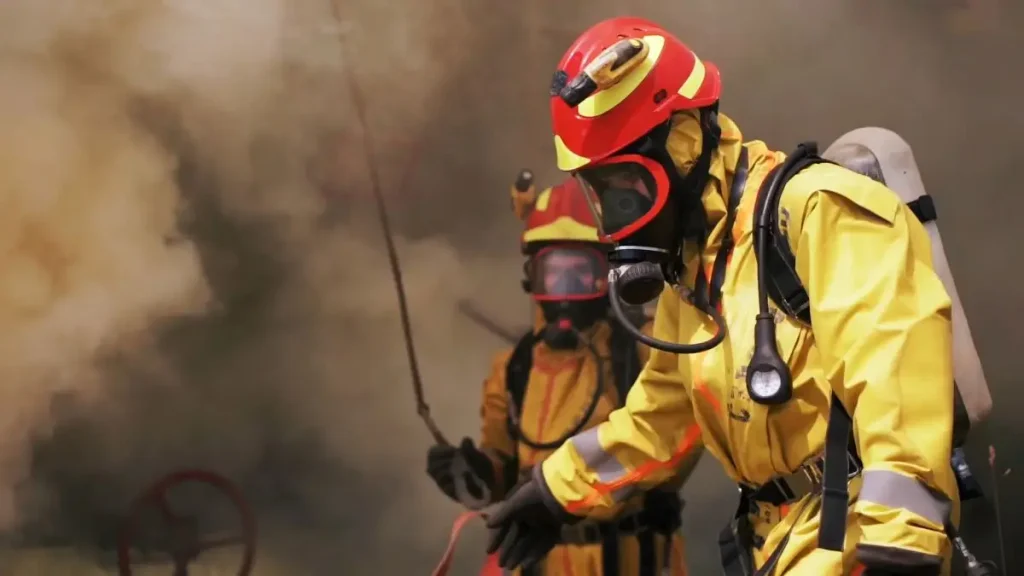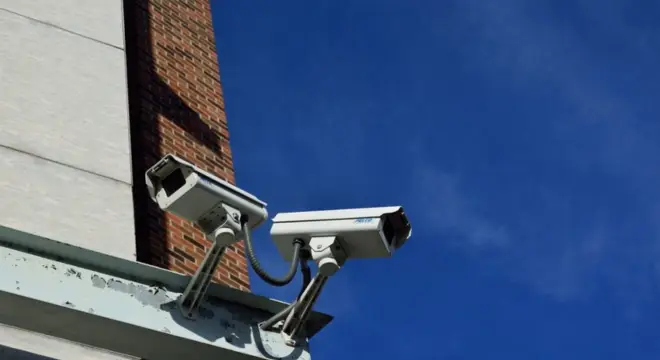Toxic Gas Leak at Garnett Home Hospitalizes Multiple First Responders
I can’t imagine what it must’ve felt like to respond to a routine emergency call—only to walk into something far more dangerous. That’s exactly what happened late Friday night on 18th July in Garnett, Kansas.
Around 10:30 p.m., a 911 call came in reporting someone in cardiac arrest at a home. EMS crews, first responders, and Garnett police rushed over like they always do. But as they worked to revive the patient, something felt off. That’s when the team called in the fire department to check the air quality—and what they found could’ve killed everyone inside.
It wasn’t just a medical emergency. There were fatal levels of carbon monoxide in the house. No smell. No warning. Just a silent threat strong enough to drop a person without them even knowing why.
Emergency teams immediately evacuated the home. Nine people—including eight public safety workers—were rushed to Anderson County Hospital for suspected carbon monoxide poisoning. Everyone’s now in stable condition, but the situation could’ve easily ended much worse.
It’s scary because this wasn’t a freak accident. It was a real home. A regular night. And the signs were nearly invisible.
The Hidden Danger Lurking Inside the Home
You can’t see it. You can’t smell it. And by the time you feel the effects, it might already be too late.
That’s what makes carbon monoxide so terrifying. It’s not like smoke or gas—you don’t get that early warning. Instead, it quietly builds up inside your home, and you start feeling dizzy, confused, nauseous. Maybe you think it’s a cold or food poisoning. Meanwhile, your brain and organs are slowly being starved of oxygen.
In the Garnett case, there was no alarm going off. No odor. Just a person suddenly in cardiac arrest and a team of responders trying to figure out what wasn’t adding up.
The truth is, most of us aren’t prepared for this kind of invisible threat. If your heater, stove, water heater, or even a car left running in a garage malfunctions, it can start pumping out carbon monoxide without warning. And if your home doesn’t have a working CO detector? You’ll never know until it’s already done serious damage.
That’s why this story hits differently. It could’ve been any of us.
If you’re not sure what to look for, here are some gas leak signs every homeowner should know—many of the symptoms overlap with CO exposure too.
Nine Hospitalized—How First Responders Became Victims Too
When I first read that eight public safety workers were hospitalized from this single home, I had to pause.
These are trained professionals. People who walk into danger all the time. Yet even they didn’t see this coming.
They were inside the house trying to save someone’s life. No one knew the air itself was toxic. By the time the fire department tested for carbon monoxide, it was already too late—several responders had been exposed long enough to need emergency treatment.
According to a Facebook post by the Anderson County Sheriff’s Office, all nine people—eight responders and one civilian—were rushed to Anderson County Hospital. Thankfully, they’re all now stable and recovering. But the post also included a serious reminder: this could’ve easily turned into a multi-casualty event if things had gone even slightly differently.
It really shook me to think that even professionals—wearing gear, trained to spot danger—weren’t safe from something as quiet as a CO leak. And it makes you wonder: if it can get to them, what about us?
In another case, a tampered gas line led to a fatal fire in Washington Township—a reminder that small oversights or foul play can spiral into tragedy.
Was This a Preventable Disaster?
I keep thinking about one question: could this have been avoided?
Right now, the official word is that the incident is under investigation. No one’s publicly confirmed the exact source of the leak yet. But if you know how carbon monoxide usually gets into homes, the possibilities are pretty clear—malfunctioning furnaces, gas appliances, generators running indoors, or cars idling in attached garages.
Any one of those could’ve been the trigger in Garnett.
Here’s the thing though—most homes in the U.S. still don’t have working CO detectors, even though they cost less than dinner for two. Sometimes people buy them but forget to plug them in. Other times, the batteries are dead. And some people just don’t realize their home even needs one.
That’s the real danger. It’s not just the leak itself—it’s that we’re not paying attention to it until it’s too late.
What do you think—are we doing enough to prevent these kinds of tragedies? Have you checked your home for CO risks recently? Let’s talk in the comments.
How to Protect Your Home from a Carbon Monoxide Leak?

Let’s get straight to it—you don’t want to wait for a scare like Garnett to take action. Here’s what I’d do, and what I’d suggest for you too:
- Install carbon monoxide detectors on every floor, especially near sleeping areas. Plug-in models with battery backup are best.
- Test them monthly, and replace batteries every six months.
- Have your furnace, fireplace, and gas appliances inspected annually by a licensed professional.
- Never use a generator or grill inside, even in a garage with the door open.
- Don’t leave your car idling in the garage, even briefly.
And if you ever feel dizzy, nauseous, confused, or suddenly tired—get outside immediately and call 911. Don’t try to “wait it out.”
Most importantly, don’t assume it can’t happen to you. The people in Garnett didn’t either.
I came across a safety update recently through a WhatsApp channel that shares local alerts and home hazard tips—stuff like gas leak warnings and real-time emergency updates. It’s small things like that that keep you one step ahead.
Carbon Monoxide Poisoning Isn’t Rare—The Stats Say It All
I used to think these kinds of incidents were freak accidents. One-in-a-million type stuff. But once I started digging into the numbers, the truth hit hard.
According to the CDC, carbon monoxide poisoning sends over 50,000 people to the emergency room in the U.S. every year. Around 400 of those cases turn fatal. And that’s just what’s reported—many exposures go undiagnosed or misdiagnosed.
Think about that: this gas that you can’t smell, can’t see, and can’t taste is quietly taking lives, especially in colder months when homes are sealed shut and heaters run 24/7.
What happened in Garnett wasn’t some isolated story. Just last winter, three people in Kansas City died from carbon monoxide because they ran a generator in a closed garage during a power outage. It made the news for a day, then disappeared—but the pattern keeps repeating.
If anything, Garnett is a brutal reminder that CO isn’t just some chemistry class hazard. It’s in our homes, right now, and it doesn’t care how careful you think you are.
Just recently, a home in North Plainfield exploded after a gas leak triggered by flood damage—showing how these threats can come from multiple angles.
What This Means for Emergency Responders Too?

There’s another angle that doesn’t get enough attention—how first responders are often just as vulnerable as civilians during a carbon monoxide leak.
You’d think they’d have protection for everything. But most emergency crews don’t carry CO meters unless they’re responding to a known gas-related situation. In Garnett, that wasn’t the case. It looked like a routine cardiac arrest. No reason to suspect the house itself was poisoning them.
That’s why this incident should be a wake-up call for departments too.
We need better safety protocols—whether it’s portable CO detectors clipped to their gear, or mandatory air testing at all medical scenes indoors. These small changes could keep more responders from landing in the hospital after trying to save someone else’s life.
I respect the hell out of these teams. But respect isn’t enough—they need protection.
The Investigation Is Ongoing, But the Message Is Already Clear
Right now, officials haven’t released the exact cause of the CO leak in the Garnett home. The investigation is still active, and we may not get every detail publicly.
But honestly, we don’t need to wait for a final report to learn something from this.
A carbon monoxide detector might’ve made the difference between one person going to the hospital… and nine. Maybe even a death. That’s not drama—that’s the reality this story shows us.
So if there’s anything I hope sticks with you, it’s this:
Check your detectors. Get one if you don’t have one. Talk to your family. Don’t wait for something invisible to prove it’s real.
If stories like this matter to you, or you want to stay informed about home safety and real incidents, explore more at Build Like New— we dig into what really matters for your home and family.
Disclaimer: This article is for informational purposes only and not a substitute for professional advice. If you suspect carbon monoxide exposure, leave the area immediately and call 911. Always follow local fire and safety guidelines.


